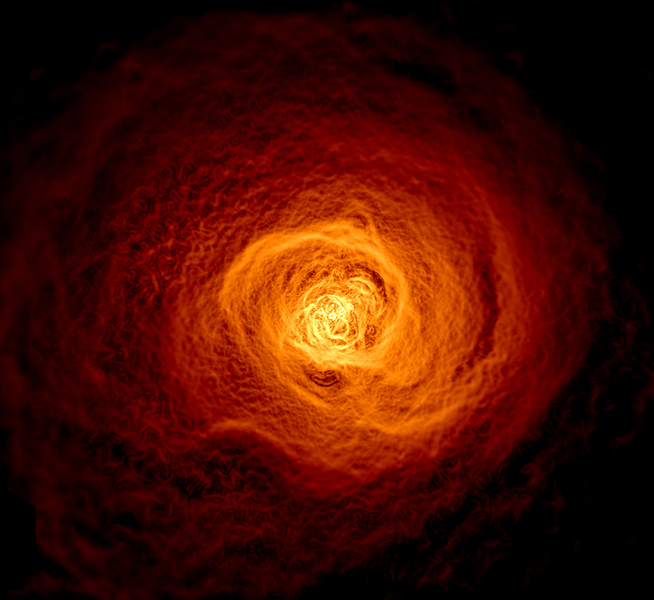
 Credit: NASA/CXC/GSFC/S.A.Walker, et al.
Credit: NASA/CXC/GSFC/S.A.Walker, et al.
ChandraXX: Resolving Physics in Perseus
The hot, X-ray emitting gas that resides in clusters of galaxies is an important tracer of the evolution of these clusters and the Universe itself. That's because clusters are the basic building blocks of the material structure of the Universe, and the X-ray emitting gas bound to the cluster actually contains most of the normal matter in the cluster (more than the total mass in the individual cluster galaxies combined). This gas is also an important reservoir of the history of major cluster events. High spatial resolution studies of X-ray emitting gas is perhaps the best way to understand this history, and the Chandra X-ray Observatory has, over its 20 year history, has made astounding observations of a number of important galaxy clusters. A wonderful example is shown above, a high-resolution image of the X-ray emitting gas in the famous Perseus cluster, obtained in a Chandra observation extending over more than 10 days. This image has been digitally enhanced to highlight bright, billowing wave crests in the X-ray emitting gas. Astronomers believe the waves were stirred up like a penny dropped in a pond by a near collision with a small galaxy cluster which passed Perseus a few billion years ago. An unusual, bright edge stretching a quarter million lightyears can be seen towards the lower left of the image. Comparison of this structure with detailed simulations shows how the gravitational interaction produced by the near-collision sets up sloshing motions in the intra-cluster gas, and also reveals key information about the pressure of the gas and the strength of the magnetic field threading through the cluster.
Published: August 19, 2019
<
HEA Dictionary ● Archive
● Search HEAPOW
● Other Languages
● HEAPOW on Facebook
● Download all Images
● Education ● HEAD
>

Each week the HEASARC
brings you new, exciting and beautiful images from X-ray and Gamma ray
astronomy. Check back each week and be sure to check out the HEAPOW archive!
Page Author: Dr. Michael F. Corcoran
Last modified Monday, 26-Feb-2024 17:35:59 EST


